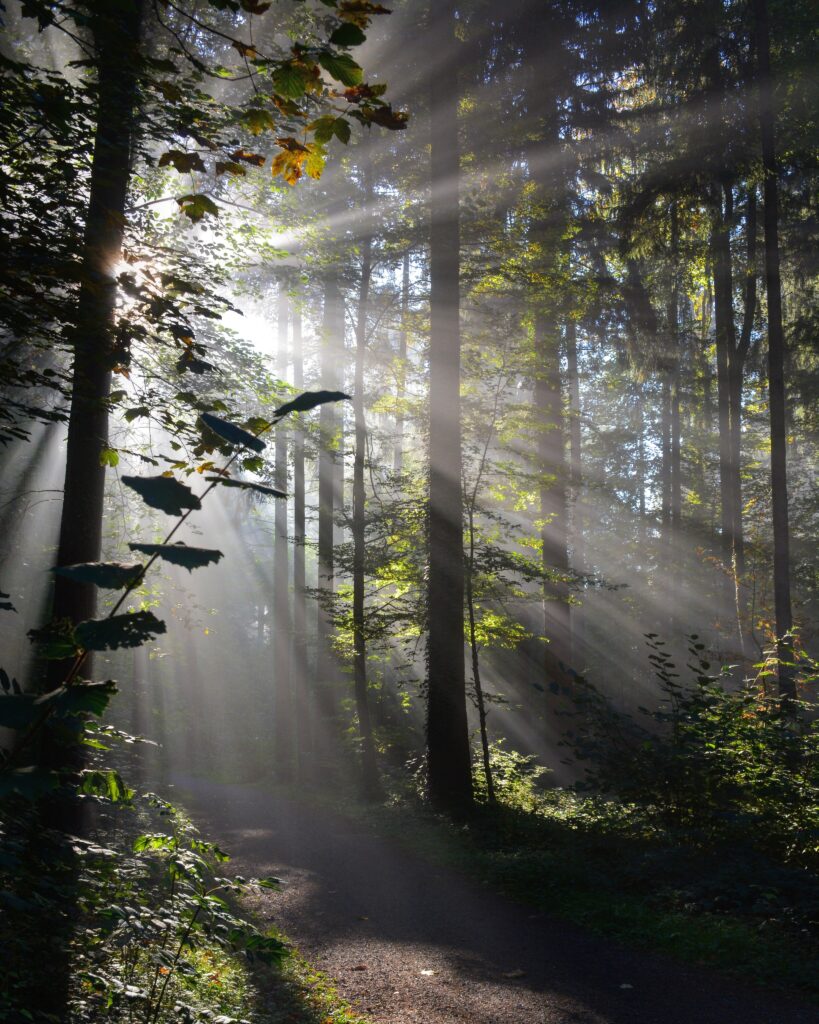
2024 Forest Forecast
While the new year brings many new joys, it is also a time to be aware of what could cause complications in our woods. This article touches on what you should be on the lookout for in 2024, along with expert advice.
By Denise Thornton
2024 is shaping up to be a year of challenges for Wisconsin landowners, but with advice from our panel of WDNR forest health specialists, a DNR invasive species specialist, and the director of the Wisconsin State Climatology Office, you can become better informed, and be ready to make the best management choices for your woolands in the new year.
DROUGHT IS THE BIGGEST CONCERN
The most pervasive concern for Wisconsin’s trees this coming year is drought. Although January through April 2023, was our wettest start to a year on record, Wisconsin has just completed a year marked by drought, that looks to continue into this winter. According to Steve Vavrus, director of the Wisconsin State Climatology Office, “We don’t tend to think about drought in winter because the trees and crops are dormant, but it hasn’t gone away.”
Vavrus says we can expect the trend of recent winters to continue with more freeze-thaw cycles and more snowfalls that melt off rather than build up into a big snowpack. “Precipitation is difficult to predict further out, but so far, it has been a very typical El Nino winter,” he says. “They tend to be warm in our area with a slight tendency to be dry. This past December was the warmest in Wisconsin since records started being kept in the 1890s. The statewide average temperature during December was above freezing (32.3 degrees F) for the first time.”
Varvus noted that the Wisconsin State Climatology Office is part of The Rural Partnerships Institute, which is expanding Wisconet, a network of weather and soil monitoring stations throughout the state to help landowners make good decisions.
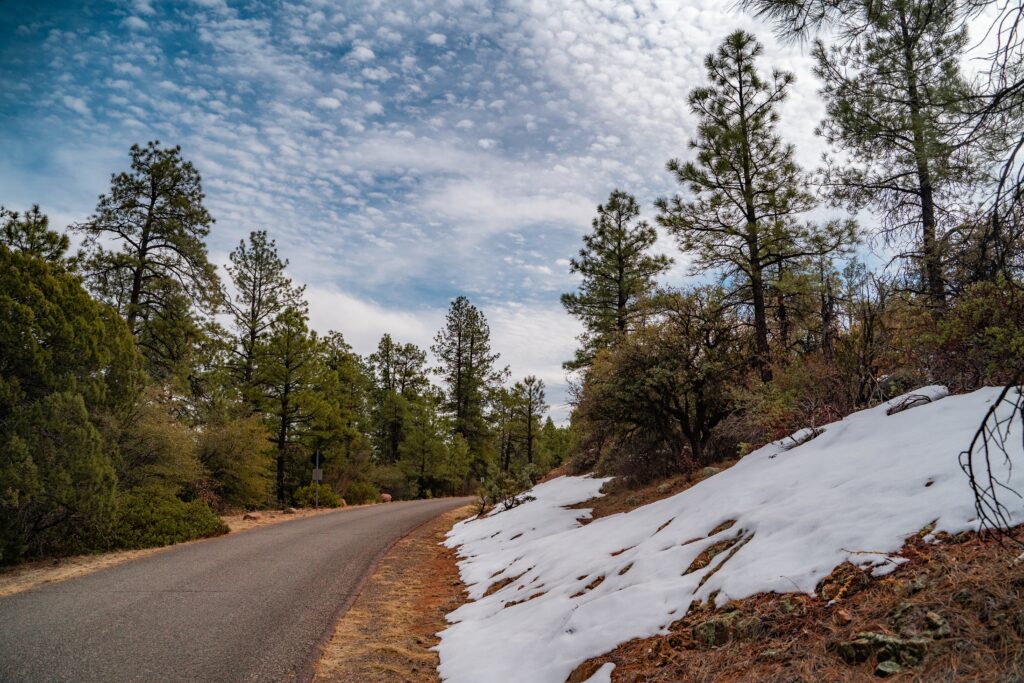
Over 1/3 of Wisconsin is in drought right now. “This drought pattern has been holding in Wisconsin since the middle of 2021,” says Paul Cigan, a WDNR forest health specialist in the northwest region. “It spiked upward in the latter half of 2022, and then 2023 had the driest growing season on record for Wisconsin in the 20 years that the U.S. Drought Severity Index has been kept. Watering is not a practical solution for acres of trees, but if there are some special trees in your yard that you value, check out this article from the DNR forestry news blogs.
What are the consequences of having little or no snow cover for Wisconsin’s woodlands? Snow protects a tree’s fine roots from freezing. Without snow, frost from the air penetrates deeper into the ground. “Over time, the frost can get to two or three feet deep like we saw in the winter of 2002/2003,” says Cigan. “If we get cold conditions without much snow in January, we could see fine roots getting killed, causing dieback in trees like oak, maple and even pine. The snow not only acts as a protective layer from frost, but it also provides moisture as it melts in the spring. If we don’t have much melt because we had a thin snowpack, that can also stress trees when they are trying to produce leaves in spring.
“Even though the trees in Central Wisconsin are acclimated to sandy soils, they also feel the effect of drought,” says Alex Feltmeyer, forest health specialist in the central region. “In 2019 we had the wettest year recorded throughout the state of Wisconsin and were dealing with red pine death from too much rain, and now we are dealing with drought stress,” she says.
“Pine in the higher areas of the stand will show stress first,” Feltmeyer notes. “Even those just one foot higher. That is a diagnostic to use when looking at a stand. If trees are dying in higher elevations, I think drought. Whereas if there is too much precipitation, pines will die first in the lower areas.”
HOW WEATHER WILL AFFECT INSECT DAMAGE
A mild winter and drought conditions will affect the kind of insect damage landowners can expect in 2024. Drought-stressed trees are more vulnerable to insect attack in general, and some insects will thrive in drought conditions – in particular, Spongy Moth.
Spongy Moth
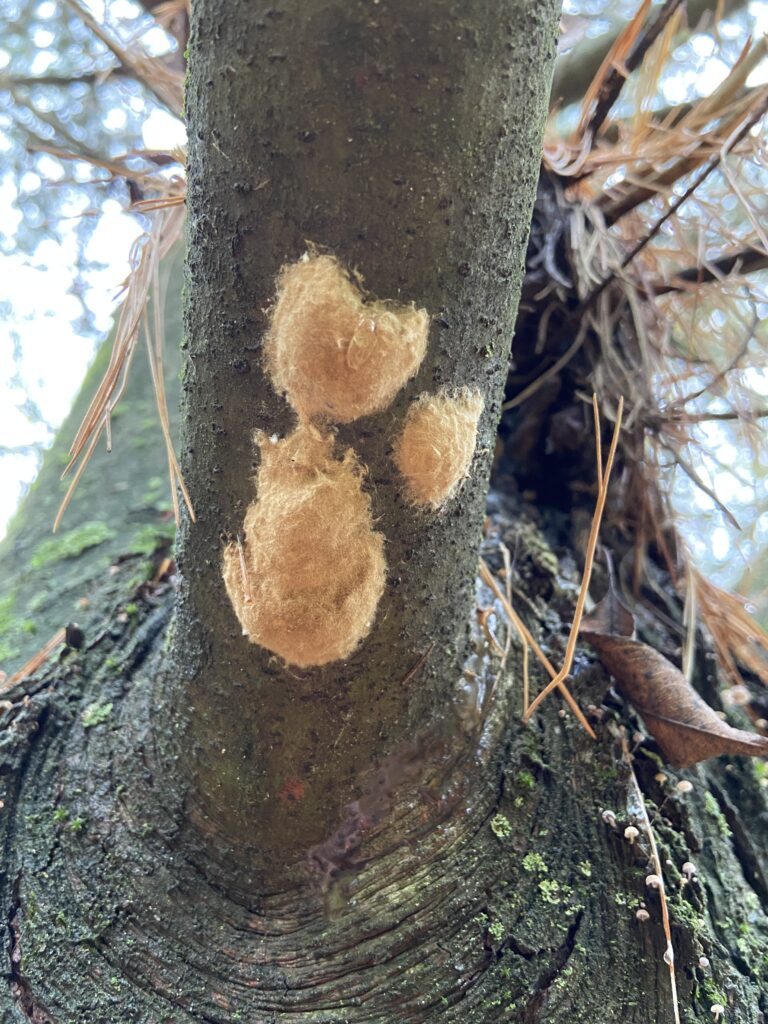
Spongy Moth looks like it is going to have another outbreak year unless we have a wet spring, according to Bill McNee, forest health specialist for the southeast region. The fungal disease caused by Entomophaga maimaiga can attack Spongy Moth caterpillars and kill them. It has proven effective in killing caterpillars when the springs are wetter than average. “These last few springs, we did not get a lot of rain, and so the fungus did not get a good start.”McNee encourages land owners to inspect their property now to see what kind of spongy moth problem they may have. His article in the Forestry News blog is a good reference. He recommends signing up for the DNR forest health newsletter to keep updated.
“Walk your woods! Really be on top of what is happening on your property. Drought causes stress that can lead to even formerly harmless insects and diseases damaging trees,” says Feltmeyer. “Do egg mass surveys. The rule of thumb is that if you are planning a timber harvest in the next few years, do the egg mass survey for a few years beforehand to avoid problems.” It could make all the difference in the success of your management practice.
Linda Williams, DNR forest health specialist for northeastern Wisconsin, reported that Marinette County had a huge problem with Spongy Moth in 2023. “We will definitely have the same problem again in 2024,” she says. “Landowners who had defoliation last year should anticipate more defoliation this year, and it will probably spread to some new areas.”
Emerald Ash Borer
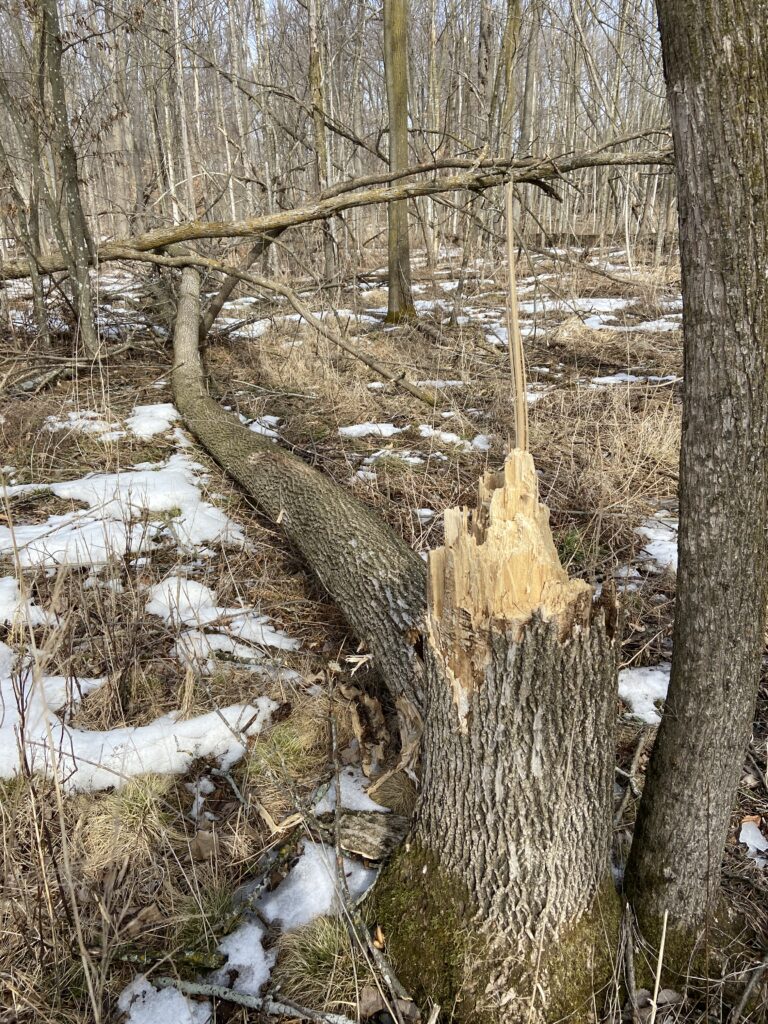
“We are down to three counties that have not found Emerald Ash Borer (EAB),” says McNee. “They probably have it too — it just has not been found yet.” Learn more at the EAB website.
“A major issue with EAB is that dead ash trees are disproportionately on wet sites that you can only harvest in winter, but in such a mild winter, there is going to be little or no logging on these sites,” says McNee. “In many areas, the dead ash are at or past the end of their economic value on these wet sites. In the southern third of the state, the ash trees have been dead long enough that I see them disintegrating in large numbers. It’s pretty common to see an ash tree that has been dead a few years snapped off at the base or a few feet up.”
Two-lined Chestnut Borer
Though a native insect, it likes to attack oak trees under stress. “The more stressors we have impacting our oaks, like Spongy Moth defoliation and drought, the easier it is for Two-lined Chestnut Borer to attack,” says Linda Williams forest health specialist in the northeast region. “Two-lined chestnut borer is going to be an issue statewide, but definitely in my zone. I anticipate some landowners will start to see oak tree mortality from this.” Here is a recent Forestry News article on it.
Oak Leaf Roller
Wisconsin had an outbreak of Oak Leaf Roller in 2022 that continued into 2023 in some areas. “It’s a native insect that we have never had a problem with before, but large areas were severely defoliated,” says Williams. “Some of those same trees were defoliated in 2023 by Spongy Moth, and now they are experiencing drought as well. Probably some tree mortality will start showing up.” Learn more in this article from the July 2022 Wisconsin DNR Forestry News.
Forest Tent Caterpillar
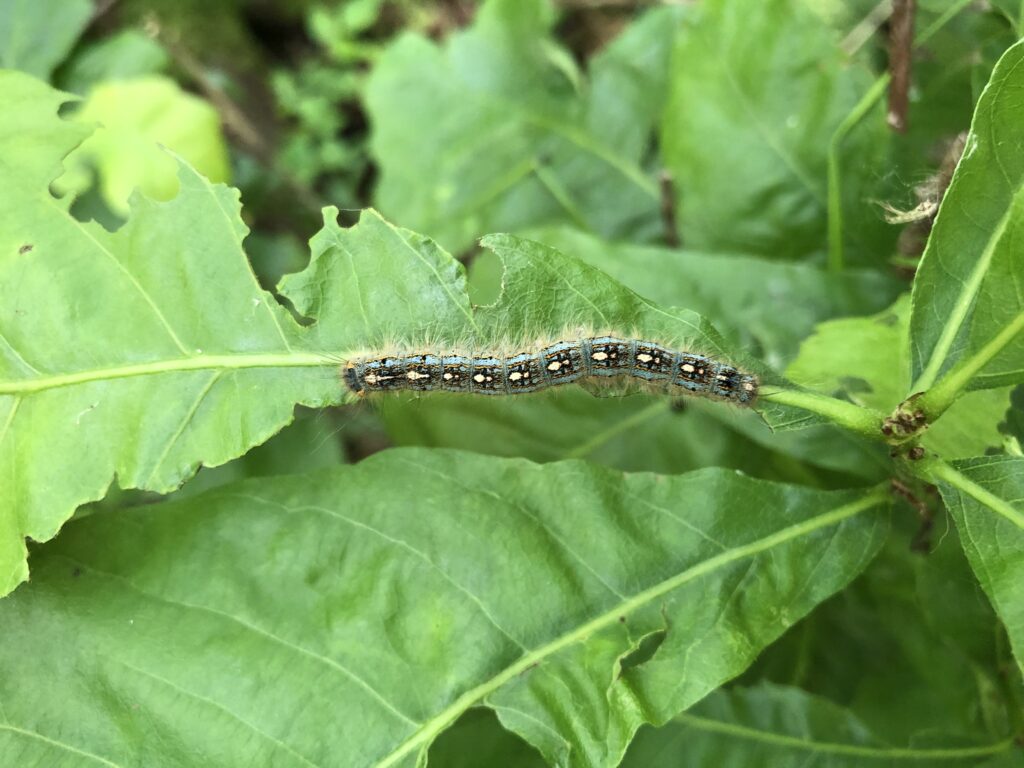
“Forest Tent Caterpillar is another defoliator we started seeing in 2023 in localized areas where the numbers were high enough that people noticed them easily,” says Linda Williams, forest health specialist in northeastern Wisconsin. Though they are native, Wisconsin has not seen a major outbreak since the early 2000s. They usually have outbreaks every 12 to 15 years, and so we are overdue. Among other hardwood targets, they defoliate oak and aspen. “Those are also two favorite species of Spongy Moth,” she notes. “We may have both of them going at the same time.
Spruce Budworm
Spruce Budworm is another native insect that has been causing problems mostly in north central Wisconsin. “We have had really severe spruce budworm defoliation on balsam fir and spruce,” Williams says. “This was a severe year for it in some areas, and that will be an issue next year as well. If you have drought affecting those trees that were severely defoliated, there will definitely be balsam fir and spruce that are not going to make it.” Tamaracks growing near balsam fir have also been defoliated.
Oak Wilt
“Aside from spring storm events that could break branches, oak wilt is not generally weather related, so the drought won’t cause more oak wilt,” says Williams. “When the insects first bring the fungus to a tree, they are attracted to a fresh wound from pruning or storm damage. Once the disease is in a tree, it moves into the root system and travels to neighboring trees from root to root.” Oak wilt can be prevented by NOT cutting or pruning oaks when insects that transmit oak wilt are active during April, May, June, and July.
WHAT INVASIVE PLANTS TO BE WATCHING FOR
The usual suspects are still at the top of the list — Garlic Mustard, Buckthorn, Multiflora Rose, Honeysuckle, and Autumn olive, according to Erika Segerson-Mueller, Wisconsin DNR invasive plant program specialist. Those are the best-known invasive plants. They are pretty widespread, but there are still healthy forests up north where it is a little cooler and they aren’t as common yet.
Here are some newly threatening invasive plants Segerson-Mueller would like landowners to be alert for.
Japanese Stiltgrass
Right now, there is only one known location in Wisconsin. “It has been found on the Coulee Experimental State Forest outside of LaCrosse,” says Segerson-Mueller. “It’s an aggressive, annual grass that was identified in 2020. We are hoping people will recognize it so that if we do find more, we can treat it quickly. Learn more here.
Mile-a-Minute Weed
Mile-a-Minute Weed has recently been found in Michigan. It can grow six inches a day and overwhelm other plants. “It is a special concern to Christmas tree nurseries because of its propensity to smother tree and plant seedlings,” says Segerson-Mueller. “It looks like almost nothing else in the forest and has barbs on the stem that let it climb over and attach to other plants. Learn more here.
Japanese Barberry
Some Japanese barberry cultivars are available for sale in Wisconsin, but they are dangerous to woodlands and can pose a health threat to humans. “When they get into forests, they are really aggressive, and great spreaders,” Segerson-Mueller says. “It grows into dense hedges that have low light and high humidity, providing a perfect place for deer mice to hide. Where there are dense populations of Japanese barberry, there tend to be more deer ticks and higher levels of Lyme disease.” Learn more here.
Tree of Heaven
“This is mostly found in the southern half of the state, but as the climate shifts, its range could expand,” says Segerson-Mueller. This plant is aggressive, produces chemicals toxic to other organisms, and can form an impenetrable thicket. According to the Iowa DNR, juvenile spotted lantern fly nymphs and adults like to feed on Tree of Heaven and then move on to crops and plants including grapes, apples, hops, walnuts, and hardwood trees. Learn more here.
WHAT THE EXPERTS RECOMMEND FOR 2024
“There is a trend line where we are seeing a higher frequency of extremes and overall warmer temperatures,” notes Cigan. “If we don’t have more snowfall and a good growing season next year with normal precipitation, we are going to see a carryover and maybe an intensification of some of the issues already in play.
If you have had defoliation or drought, or expect upcoming defoliation or drought, and are planning to thin in 2024, Williams suggests talking to a forester about whether thinning should be postponed to let the trees recover. Harvests in areas where there has been drought makes oak more vulnerable to attack by two-lined chestnut borer, and the oaks you leave behind for seed trees or shelter wood may not make it.”
“Sometimes holding off for a year or two is better, and sometimes it’s not. If you are doing a clear cut, then it’s not a big deal.” You want to avoid putting the trees under multiple stresses at the same time. Any two of drought, defoliation or thinning stress at the same time will probably lead to heavy tree mortality.
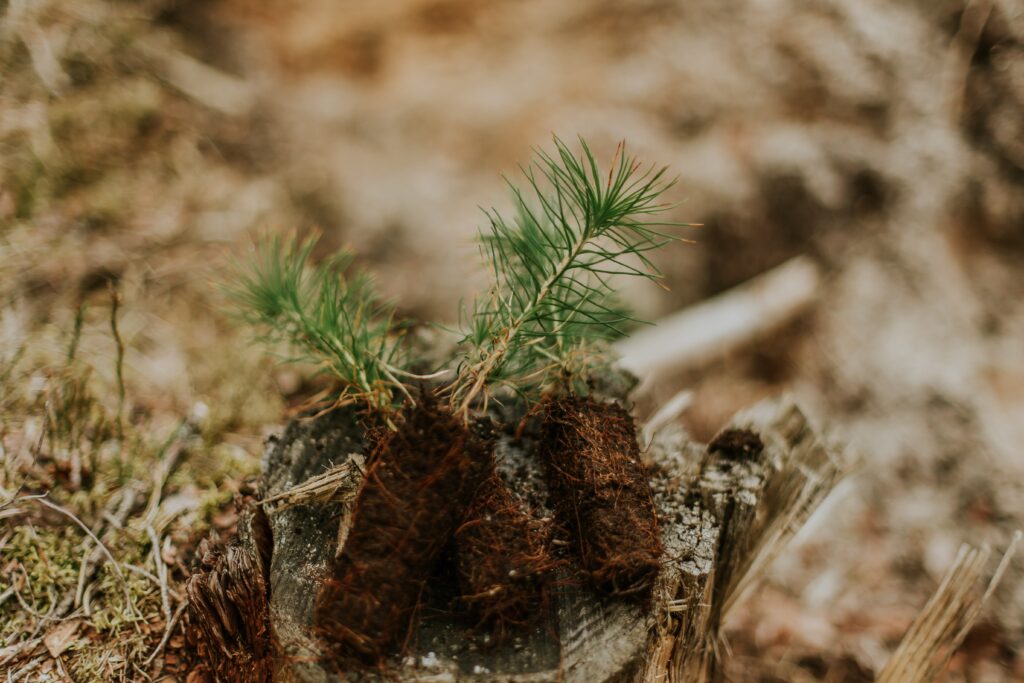
To contend with continued spongy moth defoliation, or any other insect pests as well, McNee suggests that landowners who have forests with susceptible species like oak and aspen should talk with a forester about managing their woods. Landowners in western counties are encouraged to prepare in advance for the likely arrival of Spongy Moth in the next five to 10 years. “Before heavy defoliation occurs in the future, you can take out the weak trees and encourage the growth of less susceptible species like hickory and cherry. When defoliation does occur, the forest will be healthier, more mixed, and be less impacted overall.”
“We are encouraging forest diversification more than in the past because we currently have Emerald Ash Borer, and we know more of these kinds of tree-killing invaders are going to show up here in Wisconsin. Michigan is currently contending with Hemlock wooly adelfid, established along the east side of Lake Michigan.” McNee says, “Keep things diversified.
In addition, the trees planted in 2024 will be growing for decades, and you want them to do well in the conditions expected many years from now. The long term forecast has been for generally warmer and wetter. Your tree selection should reflect that.”
